Find out how Will Ferguson experienced the rising of a centuries-old heritage and its traditions while dancing the haki, eating hangi and literally submerging himself in the mud.
I wouldn’t normally fly halfway around the world to sit in mud, but this isn’t just any mud. This is earth-warmed, geothermic mud, and I have entered the realm of Rūamoko, god of earthquakes and volcanoes, a Maori deity presiding over the shifting heart of New Zealand’s North Island.
Getting to New Zealand is easy. Just point yourself south and keep going … and going … and going. This was the last major landmass discovered by humans when a fleet of seven legendary canoes landed 700 years ago, bringing with them Polynesian seafarers who would become known as the Maori, a feat of navigation that earned them the nickname Vikings of the Sunrise. Even now, Maori tribes trace their roots to those canoes. They called the newly discovered islands Aotearoa – Land of the Long White Cloud.
New Zealand lies along a seam in the earth, a soldered line straddling two massive tectonic plates, part of the Pacific’s Ring of Fire, and I have come to Hell’s Gate, a smouldering, sulphur-infused domain just outside the hot spring town of Rotorua on the North Island to sink myself into it.
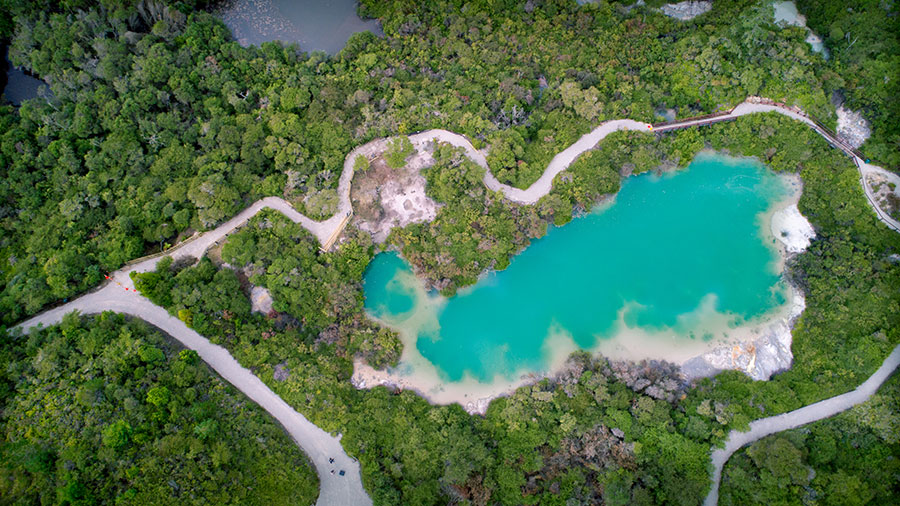
The landscape exhales steam. Ash-dead trees punctuate the forest foliage. Scorches on stones mark areas of spontaneous ignition. The gunpowder smell of burnt matches. The crumble and hiss of heat escaping, deep stomach rumblings from the depths below. The name is apt. This is a biblical realm, with purgatorial pools named Inferno, Sodom and Gomorrah, the Devil’s Cauldron, bubbling with black mud.
“Medicinal,” the guide assures me as I lower myself gingerly into the thick muck.
I’m not sure what I expected. Grit, perhaps. A scalding exfoliate, maybe. In fact, the mud of the Maori gods is silken and smooth, like warm potter’s clay, and I emerge feeling, if not younger, at the very least less old. Handy tip for those considering their own plunge into the Maori muds: rent a pair of swimming trunks when you get there or bring a cheap disposable pair with you. Normally “don’t share swim wear” is solid advice, but after a visit to the netherworlds of Rotorua – whether it be hot springs or mud baths – the scent of brimstone will never leave the fabric. Even after repeated washings, the smell of sulphur remained, and my trunks were eventually discarded.
Next to Hell sits the Garden of Eden, a wet temperate rainforest that literally glows; a luminescent fur clings to the bark, bred by the warm, moist environment. In this forest lies a naturally heated waterfall pool where warriors returning from battle would wash away the spiritual effects of having come into contact with death. Also in the forest, mixed among the native foliage like a metaphor for New Zealand itself, are European trees and plants gifted by Queen Victoria, now running wild: azaleas and hydrangeas, gloriously tangled.
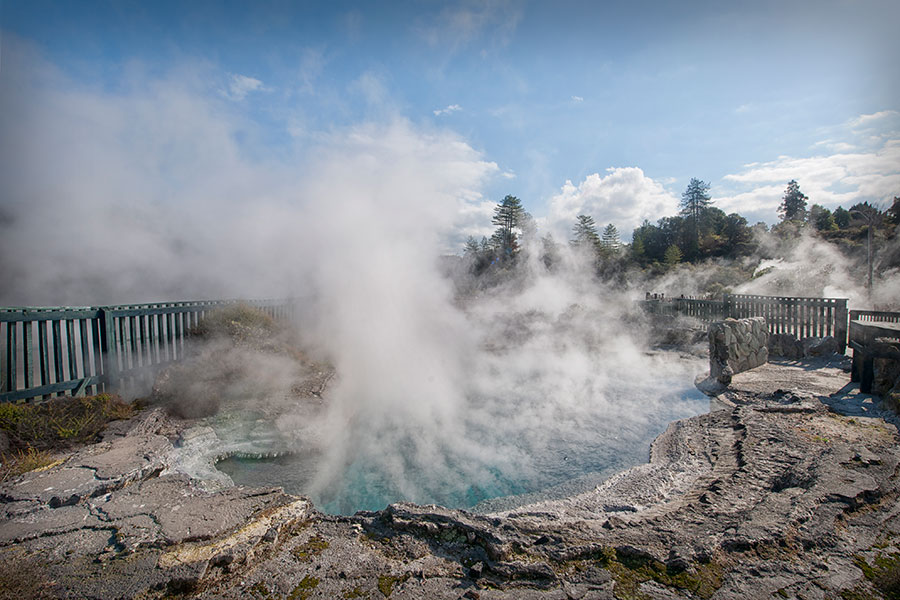
Europeans have been coming to Rotorua “for the waters” since the 1880s. Ladies with parasols and men with mutton chops and top hats. Indeed, this is one of the birthplaces of New Zealand tourism, in the mist-shrouded, eggy airs of this seismically unstable landscape.
The village of Whakarewarewa, often shortened (thankfully) to “Whaka,” is at the heart of this. Fully ensconced in an active geothermic valley, the community bills itself as a “living Maori village” – which it is. People come and go, there is an intricately carved ancestral meeting house, two small churches, a Maori language kindergarten, a café.
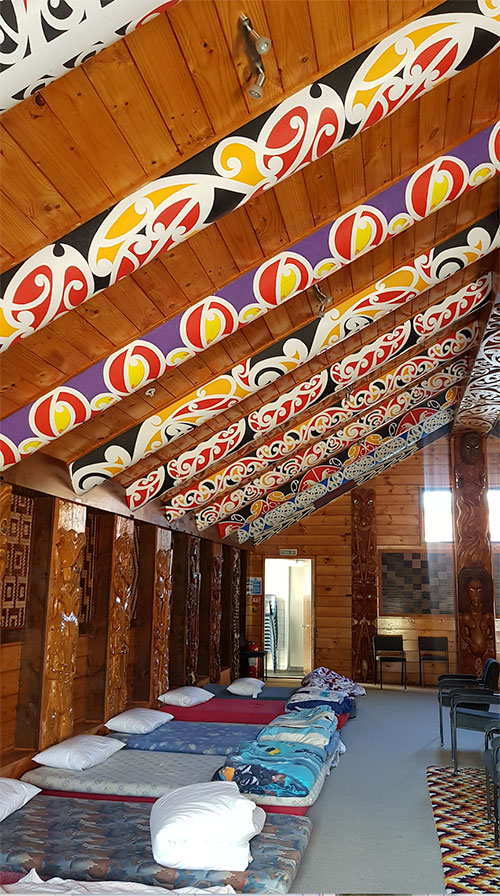
I stopped by for some of Whaka’s famous hangi (smoky meats and vegetables cooked in the village’s hot spring waters) accompanied by Paora Tapsell, a physically imposing but softspoken Maori man whose grandmother lives in the village.
Genealogy matters in Maori culture, and Tapsell first sketches out the village’s lineage. “The iwi, that’s the main tribe, is Te Arawa, which is made up of two subtribes or hapū: the Ngati Wahiaoandthe Tuhourangi.”
Following further explanation of the complexities of Maori society, Tapsell took me for a walk over to the village baths, where the underground alkaline waters are redirected into communal pools.
“Entire families would gather in the evening to bathe after the tourists left. Good fun,”he says.
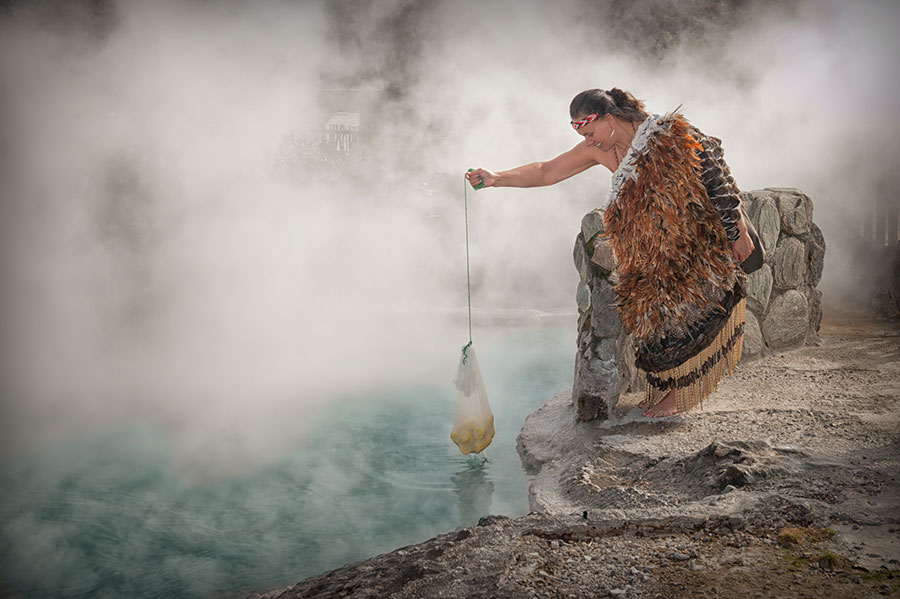
He shows me the “grumpy old man” hot spring, bubbling in angry fits and starts, where the temperature can reach 104 degrees Celsius, and the nearby “champagne pool,” named for the effervescent bubbles that boil up. “We cook root vegetables there,” he says. A terrifying, cauldron-like pond of boiling water is used for larger food stuffs; it can cook an adult pig in two hours.
The calcified minerals that remain as the waters boil away are striking. The entire landscape looks like the inside of my kettle, and Tapsell points out the colours we pass: “The yellow, that’s sulphur. Grey is silica. Orange and brown is copper and iron, and pink is cinnabar.”
Several of the older buildings seem to sag under the weight of the steam, and clouds of vapour billow through constantly. “Is it healthy?” I ask. “Living here?”
“Sure. Healthier than most. Good for asthma.”
The baths are said to help alleviate the symptoms of everything from arthritis to lumbago. It’s like setting up camp in a health spa’s steam room.
Our Whaka walkabout ends at the community hall in time for a cultural performance by Te Pakira, the village’s local dance and music group: women spinning the mesmerizing pom-pom poi sticks, the men ending with a roaring rendition of the haka war dance (more accurately, a challenge dance), slapping hands on chest, tongues extended, eyes wide in defiance. In between is a heartbreaking male-female duet version of Pokrekare Ana (“Stormy Are the Waters”), probably the most famous of Maori love songs. It tells the tale of a young woman who, captivated by the flute music of a young man, swims across a lake to reach him. Ka mate ahau, I te aroha e … (I could die of love for you).
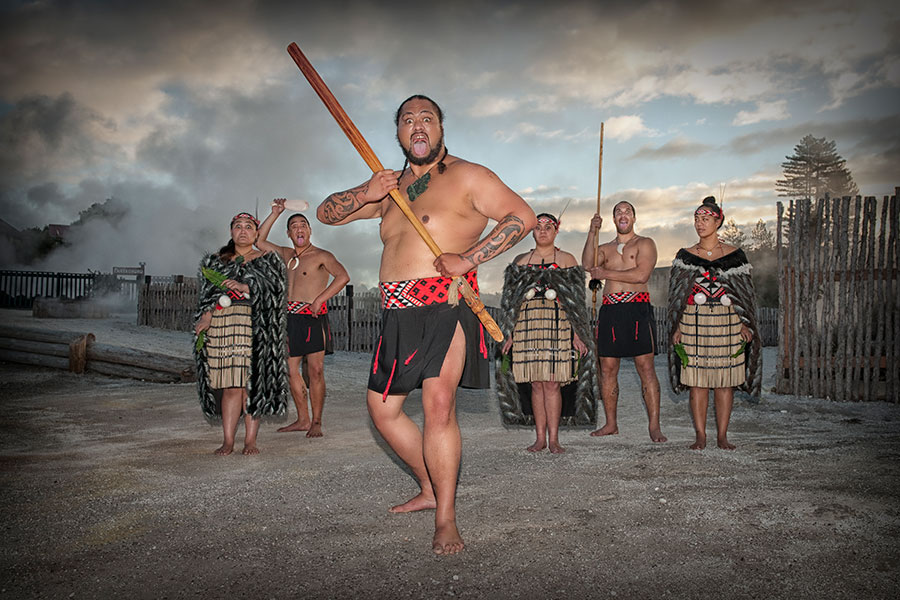
Love and war and feats acrobatic. Maori culture is richly performative, and every aspect of what they do seems to be imbued with a sense of art and storytelling. I saw this firsthand at Te Puia, which is – quite literally – next door to Whaka village. (The two are separated by a fence and little else.) Te Puia features magnificent marble-like silica terraces and the volatile Pohutu geyser, largest in the southern hemisphere, which erupts once or twice an hour, every hour, depending on her mood. And yes, Pohutu is considered a she.
Te Puia is also home to New Zealand’s Maori Arts and Crafts Institute, open to visitors, which has been fostering Indigenous culture for 100 years. Housed now in a sleek modern building, it trains students in traditional arts such as whakairo (carving), raranga (weaving) and moko (tattooing). Its mandate is to “promote, preserve and protect” Maori culture.
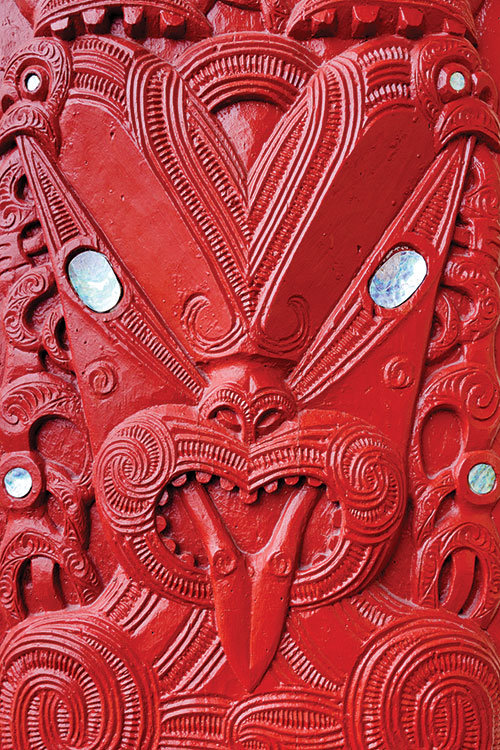
The carvers work in wood, bone and greenstone (New Zealand jade), employing tribal patterns, intricate and interwoven, fluid and alive. I ask one of the instructors, Kawana Waititi, what to look for when viewing Maori art.
“With carving, you look at the visual but also the spiritual. You try to appreciate the shape, designs, skill, the craftsmanship. And the story it is trying to tell.” It’s a supple art form. “The pitch and pressure of a single tool can change everything. We’re telling our stories. Carving our ancestors. Keeping them alive.”

Waititi and I are joined by one of his students – and friend – Tairoa Morrison, whom he calls Tai.
It’s Morrison’s last day of classes, although, in a sense, his education is only beginning. He’s an elementary school teacher in his other life. “I want to use what I learned here to teach Maori art forms and culture to the next generation of kids.”
Both Waititi and Morrison are in kapa haka performance groups, which is as physically demanding as any sport, although, as Waititi confesses, “Rugby is my first love.” (If there is a national religion in New Zealand, one that cuts across social and cultural boundaries, it’s rugby. And the All Blacks are the high priests.)

Waititi is with the Te Kapa Haka o Te Whānau a Apanui group, and Morrison is with Te Mātārae i Ōrehu. Stumped by Maori spellings and pronunciation, they kindly write it out for me. (Morrison’s mother, Talei Morrison, was an important and beloved figure in kapa haka as well.) Each group’s style draws upon its own distinct tribal traditions.
“Ours is more weapons-based,” Morrison explains. “Bigger. A lot of intensity. We call it organized chaos.” “Ours is more clean, classical,” says Waititi. He grins at his friend. “More classy.”
Together, they walk me through the six or seven key elements to look for in a kapa haka performance. “The choral song that opens it. That’s optional. Then the entry, the chant, the action song, the poi for women, the haka formen, and then the exit.”
It’s incredibly demanding. “Six weeks of intense training,” Morrison notes. And that doesn’t include the foundational skills that enter into it, as well. “It’s all connected,”he says. The carving, the culture, the haka.
Frazzled and distracted, he is still adamant that I get a proper cup of tea. “Cuppa tea?” he asks. “We’ll get you a cuppa tea.” Carl Ross, then executive director of New Zealand’s biannual Te Matatini competition, the Maori Olympics as it is known, barely sits down to talk with me when something comes up. Hundreds of performers have descended upon the national capital of Wellington. More than 60,000 spectators are expected to fill the Westpac Stadium over four days. These are kapa haka performances at their finest.
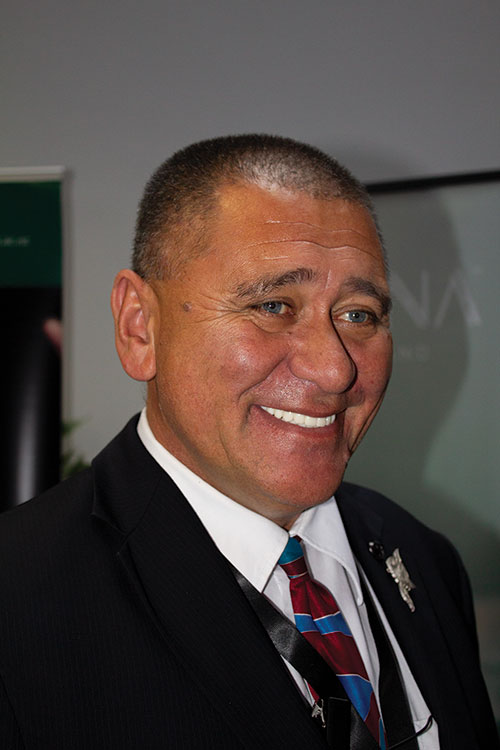
Ross, a haka performer in his own right, joins me in the visitors’ gallery overlooking the stage below.
“I was 43 years performing,”he says.“We’ve had a resurgence of Maori culture. Every year, it gets better.”
Ross has performed around the world, from the U.K. to the U.S., from Germany to Abu Dhabi, Belgium to Canada. He first learned kapa haka at school, then went on to join a competitive group.
“It’s a lifestyle. A shared experience, isn’t it? All your mates. You live together on the weekends, eat, train, learn together. The practices are all in the Maori language. Physically, very demanding.”
Does he miss it?
He smiles, wistfully. “More than anything.”
No sooner do I finally get a cuppa tea than a frantic assistant rushes in.
“They’re early,” he tells Ross, out of breath.
Who?
“Members of the royal family.”
Now, I’ll admit I’m no fan of how distant cousins of second-tier gentry tend to show up in the former colonies as though they are doing us all a favour, expecting everyone to go into a giddy tizzy, when I realize that they aren’t speaking about the British Royal Family – they’re speaking about the Maori royal family.
“Sorry, bro,” says Ross. “Gotta run.”
“No worries,” I reply, having already picked up on New Zealand’s unofficial national motto, though I am tempted to tag along.
The winning kapa haka team is Ngā Tūmanako from Auckland, though I’m happy to see Waititi’s group take third and Morrison’s take fourth. Not bad out of a field of 46 teams. Morrison’s mom would have been proud.
Erena Koopu’s biggest fear? “Our stories will be lost.” Her greatest hope? “That what we teach will be handed down, gathered up.”
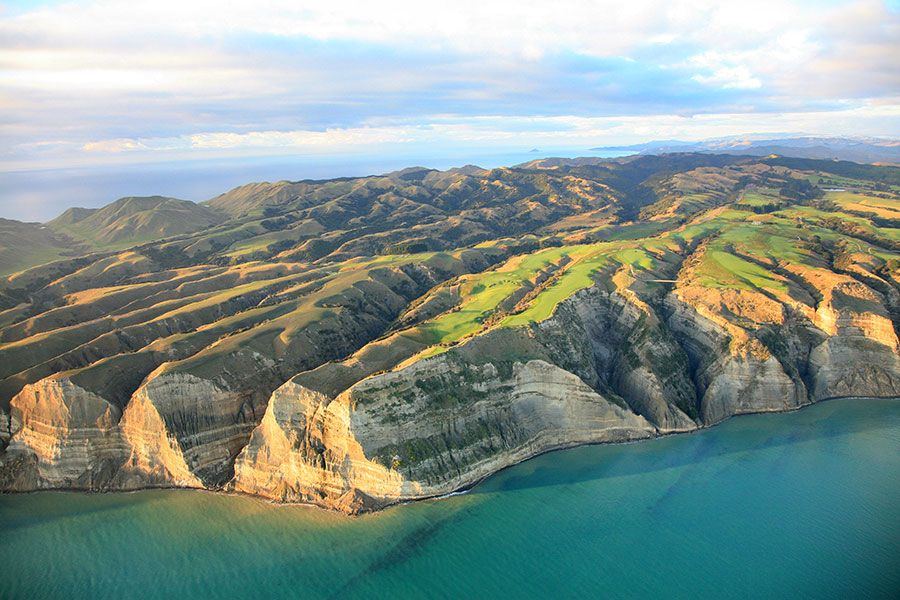
I am now in Gisborne at the end of the North Island, the country’s easternmost city, where the sun rises on the world. It’s a surfer’s paradise with palm trees lining the rivers and the boulevards. At dusk, an avian jamboree of birdsong rings out.
This is where Captain Cook made landfall in 1769, the first European to do so. It didn’t end well. The warlike haka challenge that greeted Cook terrified his crew and, rather than lay down a branch or some other offering of peace, as would have been done in Maori culture, Cook’s men opened fire. Six Maori were killed, and Cook eventually withdrew, dubbing the region Poverty Bay for his lack of trade success, a name that still sticks in the craw of the local people. This is, after all, one of the most fertile regions of the country.
Gisborne’s population is roughly 50-50 Maori and pakeha (as non-Maori are known). It is also home to the Toihoukura School of Visual Arts, and I sit in on one of the opening classes as students recite Maori chants and discuss the importance of maintaining a connection with their past.
Erena Koopu is an artist of note and a senior lecturer at the school. She has a beautiful traditional moko facial tattoo on her chin, and her paintings are both strikingly original and solidly grounded in Maori traditions. I asked Koopu about her hopes and her fears and what she felt was the underlying basis for Maori art.
“Story. Whether it is visual, performance, language, traditional houses, they hold our stories. Art is what makes culture. It is culture. Take away our stories, and you take away culture.”
The next morning, I watch the sun rise on Wainui Beach. A stormy day, with fans of light opening up and waves rolling in. I could see in the swirls and whorls the curve of Maori carvings, the moko patterns, the crash and thunder of the haka. Not the end of New Zealand, I realized, but the beginning.
A version of this article appeared in the March/April 2020 issue with the headline, “Maori Morning,” p. 80.
RELATED:
Staycation: 5 Films to Help You Pick Your Next Destination
Bucket List: Must-Do Adventures in South Australia
Spiritual Sites: Take A Virtual Tour of Jerusalem and the Holy Land
